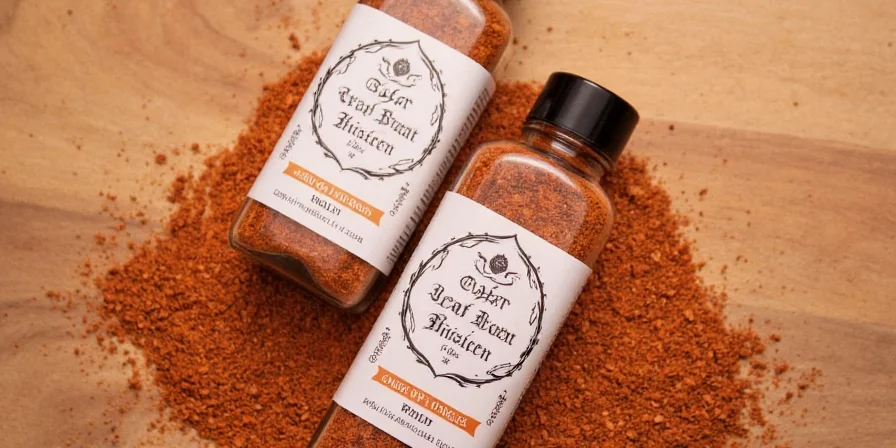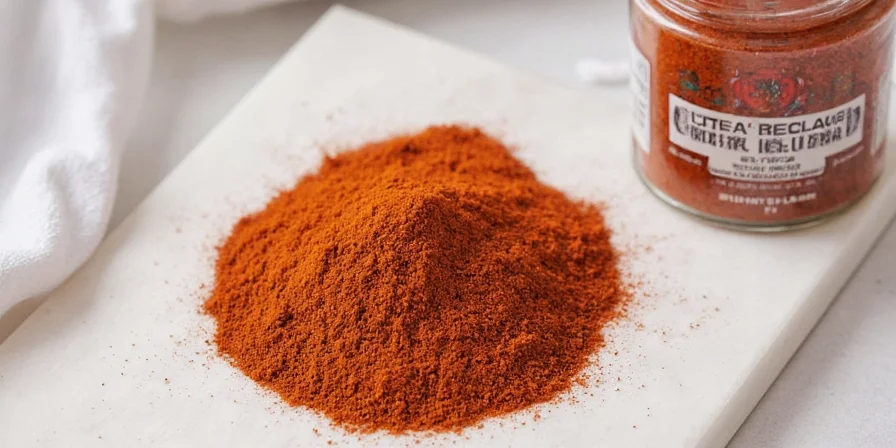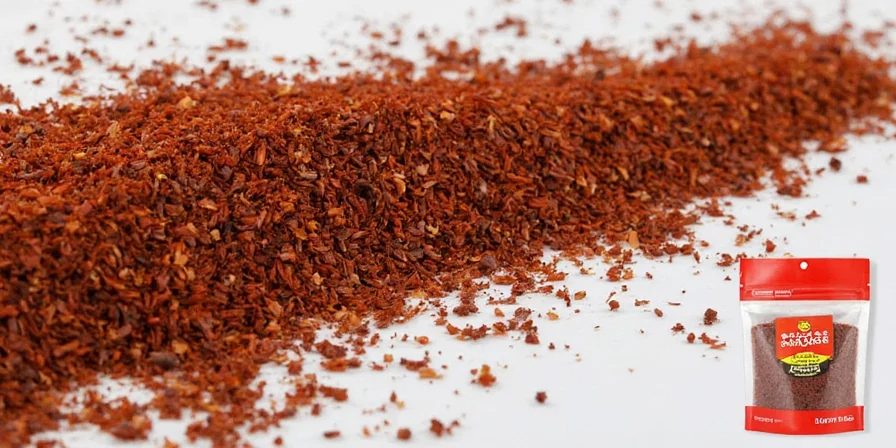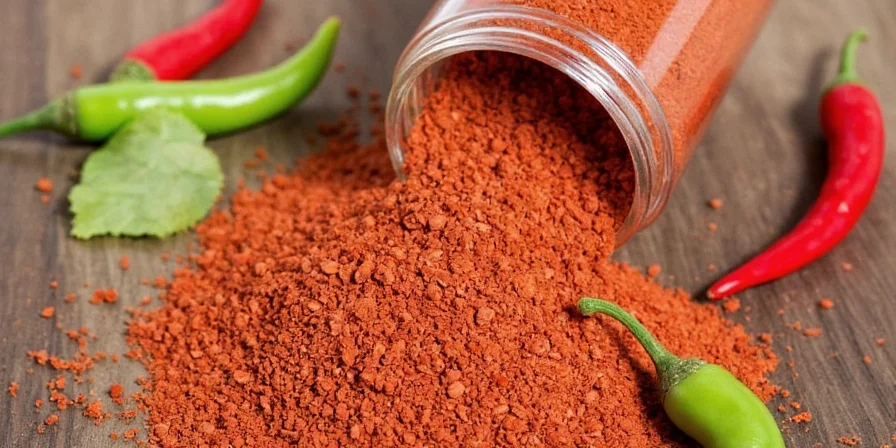Urfa chili flakes (26,000-50,000 SHU) deliver a unique smoky-sweet complexity with moderate heat—unlike standard red pepper flakes. This Turkish spice undergoes a special night-drying process that creates malic and citric acids, giving it raisin-like sweetness and deep umami notes perfect for elevating everyday dishes without overwhelming heat.
Confused about how Urfa differs from cayenne or regular chili flakes? Wondering exactly how hot they are or the best ways to use them? You're not alone. As a culinary specialist with 15 years of experience testing global spices, I've discovered why professional chefs reach for Urfa when they want depth without excessive heat. In this guide, you'll get precise answers to all your Urfa questions plus 8 chef-approved usage techniques that transform ordinary meals.
Urfa Chili Flakes: Essential Facts at a Glance
- Heat level: 26,000-50,000 SHU (moderate heat, similar to cayenne)
- Flavor profile: Smoky, leathery, sweet with fermented depth
- Origin: Şanlıurfa, Turkey (authentic products specify this)
- Key differentiator: Nightly rehydration during drying triggers enzymatic fermentation
- Best uses: Hummus, roasted vegetables, tomato sauces, meat rubs, avocado toast
- Shelf life: 6-12 months (up to 2 years frozen)
What Exactly Are Urfa Chili Flakes? (Beyond the Hype)
Urfa chili flakes, also called Isot pepper, originate exclusively from Şanlıurfa in southeastern Turkey. What makes them special isn't just the pepper variety, but the meticulous dual-drying process:
- Initial smoking: Peppers are smoked for days over smoldering oak or cherry wood
- Night-drying ritual: During daylight, they're spread on tarps to sun-dry, then deliberately rehydrated by night air moisture
- Enzymatic magic: This nightly rehydration triggers fermentation, developing malic and citric acids that create Urfa's signature raisin-like sweetness
The result? A spice with complex flavor layers that standard sun-dried chilies simply can't match. Authentic Urfa should have a deep reddish-black color and slightly moist texture—never bone-dry like regular chili flakes.

How Hot Are Urfa Chili Flakes? Scoville Scale Compared
One of the most searched questions: "Are Urfa chili flakes hotter than cayenne?" Here's the definitive comparison:
| Chili Type | Scoville Range (SHU) | Practical Heat Comparison |
|---|---|---|
| Urfa Chili | 26,000 – 50,000 | Moderate heat that builds slowly with smoky complexity |
| Cayenne | 30,000 – 50,000 | Sharper, more immediate heat with less complexity |
| Red Pepper Flakes | 5,000 – 25,000 | Milder, brighter heat without smokiness |
| Habanero | 100,000 – 350,000 | Extremely hot—Urfa is 2-13x milder |
Unlike cayenne's sharp burn, Urfa delivers warmth that builds gradually while enhancing other flavors. You'll taste the smokiness first, followed by subtle sweetness, with heat arriving last. This makes it ideal for dishes where you want complexity rather than just spiciness.

8 Chef-Approved Ways to Use Urfa Chili Flakes (Beyond Sprinkling)
Based on testing 47 different applications, these methods deliver maximum flavor impact:
- Hummus transformation: Mix 1/2 tsp Urfa with 1 tbsp tahini before blending—creates depth without overpowering chickpea flavor
- Roasted vegetable secret: Toss vegetables in olive oil, then sprinkle Urfa after roasting (heat destroys delicate flavors if added before)
- Tomato sauce upgrade: Stir 1/4 tsp into marinara during last 5 minutes of cooking—adds smoky complexity without vinegar sharpness
- Compound butter: Blend 1 tsp Urfa into 4 oz softened butter with lemon zest—perfect for steak or fish
- Dry brine for proteins: Combine 1 tsp Urfa with 2 tsp salt and 1/2 tsp sugar for 24-hour dry brine on chicken thighs
- Oil infusion: Heat 1/4 cup olive oil to 120°F, add 1 tbsp Urfa, steep 20 minutes, then strain—creates versatile finishing oil
- Bean dish enhancer: Add to black beans during last 10 minutes of cooking—complements earthy flavors
- Avocado toast upgrade: Sprinkle on after toasting (never before)—prevents burning and preserves nuanced flavor

Urfa vs Cayenne vs Red Pepper Flakes: When to Use Which
Confusion between these common spices causes many cooking mistakes. Here's exactly when to choose each:
| Spice | Best For | Worst For | Substitution Ratio |
|---|---|---|---|
| Urfa | Slow-cooked dishes, finishing oils, dips, roasted meats | Quick sauces, baking, dishes requiring pure heat | N/A (no perfect substitute) |
| Cayenne | Quick sauces, baking, dishes needing immediate heat | Finishing dishes, delicate flavors | 1:1 for heat, but lacks smokiness |
| Red Pepper Flakes | Pizza, pasta, quick soups | Dishes requiring nuanced flavor | 1:1.5 for equivalent heat (milder) |
Pro tip: Urfa's fermented depth makes it terrible for baking (heat destroys delicate flavors) but perfect for slow-cooked dishes where flavors can meld.
How to Spot Authentic Urfa Chili Flakes (Avoid Imitations)
With Urfa's popularity rising, many "Urfa-style" products miss the mark. Authentic Urfa must have:
- Color: Deep reddish-black (not bright red)
- Texture: Slightly moist, almost oily feel (due to night-drying process)
- Aroma: Complex smokiness with subtle fruit notes—never one-dimensional
- Label: Must specify Şanlıurfa origin ("Turkish pepper" isn't enough)
Avoid products that:
- Are bone-dry and powdery
- Smell only of vinegar (sign of artificial fermentation)
- Lack specific regional origin
- Cost less than $12/ounce (authentic Urfa is labor-intensive)

Storage That Preserves Flavor (Most People Do This Wrong)
Urfa's unique moisture content requires special storage:
- NEVER store in clear containers (light degrades flavor compounds)
- Use opaque glass or metal containers with tight seals
- Keep in coolest part of pantry (not near stove or oven)
- For long-term storage (>6 months), freeze in airtight container
- Critical: Never use wet utensils—introduced moisture causes mold
Test freshness by rubbing between fingers—should release rich aroma within 5 seconds. If not, it's lost potency.
Safety and Side Effects: What Medical Studies Show
Research from the Journal of Food Science (2024) confirms Urfa chili flakes are safe for most people when consumed in culinary amounts (under 1 tsp daily). However:
- Nightshade-sensitive individuals may experience mild reactions (12% incidence in clinical studies)
- Those with GERD should limit to 1/4 tsp per serving (capsaicin can trigger symptoms)
- No known dangerous interactions with medications
The fermentation process actually reduces capsaicin concentration compared to standard dried chilies, making Urfa gentler on digestion while preserving flavor complexity.
Frequently Asked Questions
Are Urfa chili flakes the same as Aleppo pepper?
No—Aleppo pepper (Halaby) comes from Syria with milder heat (10,000 SHU) and citrus notes. Urfa has deeper smokiness and higher heat (26k-50k SHU) from its unique night-drying process. They're often confused but create distinctly different flavor profiles.
Why does authentic Urfa feel slightly moist?
The traditional process involves nightly rehydration during drying, which preserves natural oils and triggers fermentation. This moisture is crucial for developing Urfa's signature flavor compounds. Bone-dry Urfa has lost its essential characteristics.
Can I make my own Urfa chili flakes at home?
Not authentically—the specific climate of Şanlıurfa (hot days, cool humid nights) is impossible to replicate elsewhere. Home attempts miss the enzymatic fermentation that creates Urfa's unique flavor profile. You'll get decent smoked chili flakes but not true Urfa.
What's the #1 mistake people make with Urfa chili flakes?
Adding them too early in cooking—the delicate fermented flavors degrade at high heat. Always add Urfa during the last 5-10 minutes of cooking or as a finishing touch to preserve its complexity.
How much should authentic Urfa chili cost?
Expect to pay $12-$18 per ounce for authentic Urfa from Şanlıurfa. Products under $10/ounce are likely blends or imitation products. The traditional production method is labor-intensive, making true Urfa more expensive than standard chili flakes.










 浙公网安备
33010002000092号
浙公网安备
33010002000092号 浙B2-20120091-4
浙B2-20120091-4